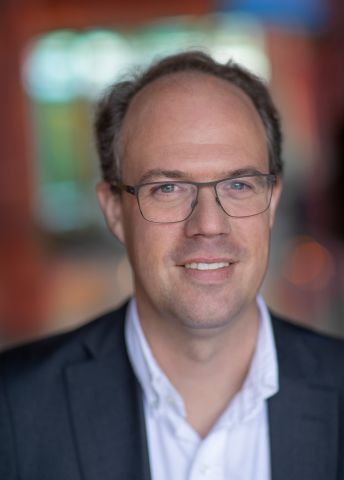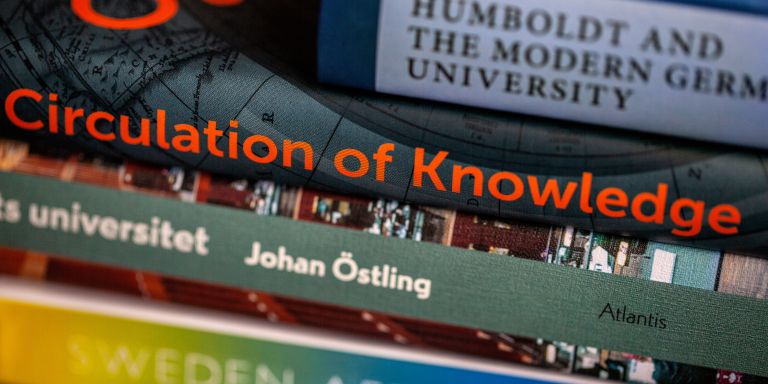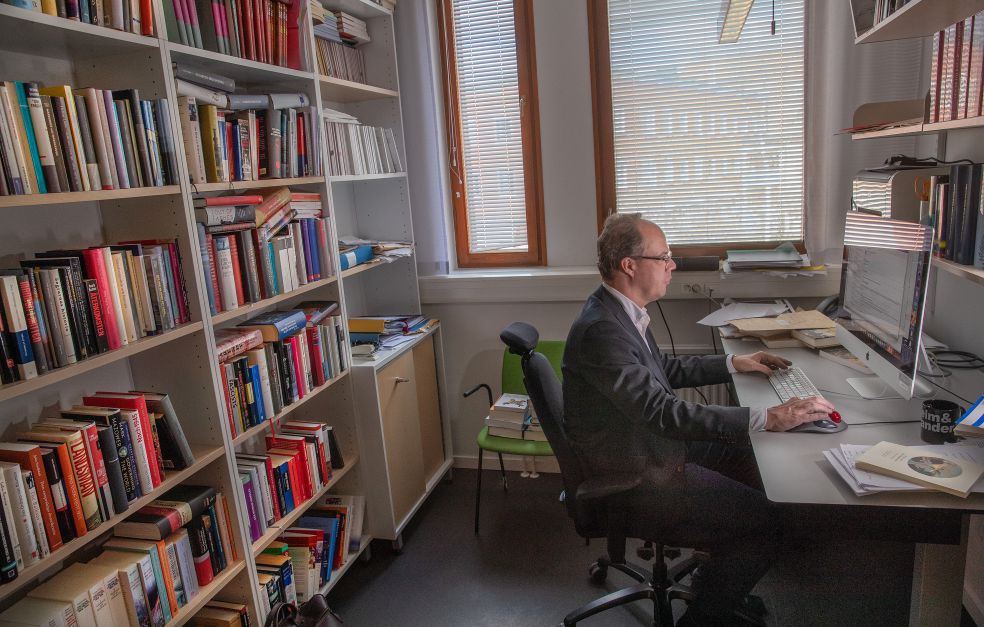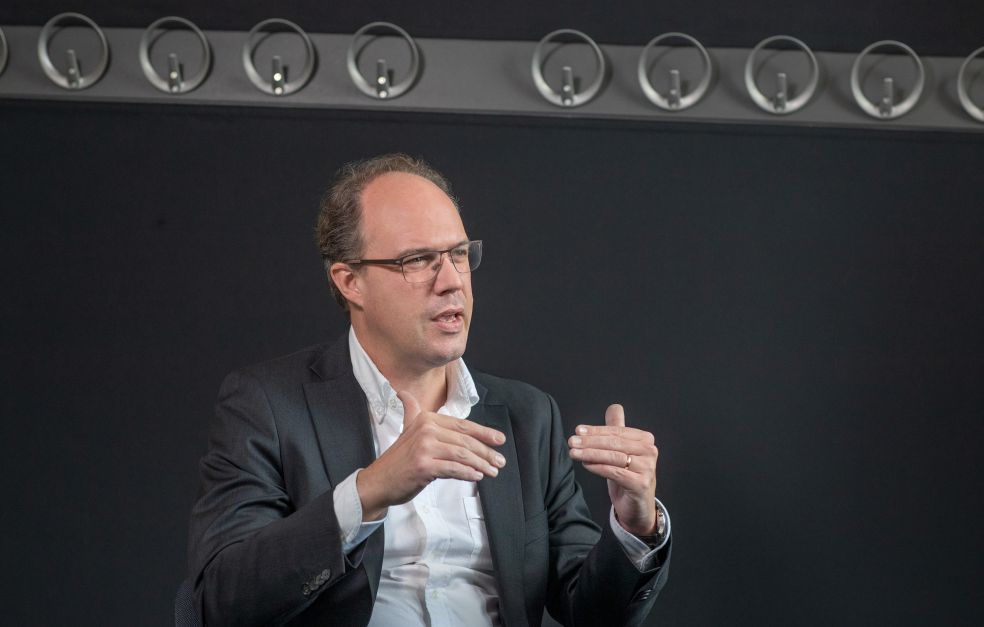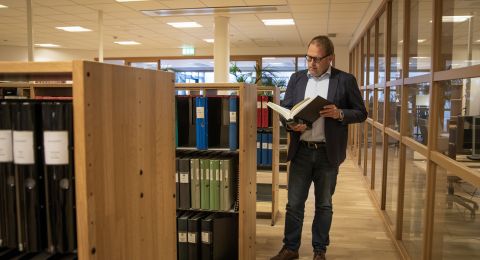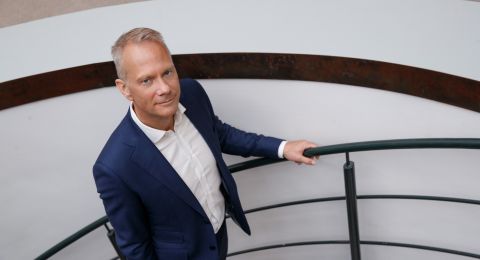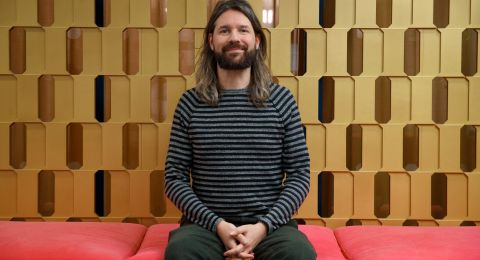Johan Östling is conducting a research project entitled “Humanities in motion”, in which he focuses on Sweden and West Germany in the 1960s and 1970s. He has been chosen as a Wallenberg Academy Fellow, and is studying how humanistic knowledge circulated from the academic world to the public at large.
Johan Östling
Associate Professor of History
Wallenberg Academy Fellow prolongation grant 2022
Institution:
Lund University
Research field:
This history of modern Europe (primarily Sweden and Germany): knowledge, ideas, culture, and politics.
“I am interested in what is known as the pre-digital public sphere, and the role played there by advanced academic knowledge. In particular, I am studying the humanities – subjects such as philosophy, history and literature. These are subjects that occupied center stage in a number of arenas during the post-war era,” Östling says.
He is a member of the Department of History at Lund University, and has just recruited two postdoctoral fellows to his project. They will become part of a growing research environment at the department, involving scholars with a common interest in the history of knowledge.
A few years ago Östling published a book about the Humboldt university model, giving an account of developments leading to the modern-day university.
“When I worked on the book, I was a lone wolf – it was me and my book. That’s how many academics in the humanities work. My new project gives me an opportunity to lead a research team. It’s really stimulating, and I’m convinced that it’s crucial for humanistic research to establish a critical mass consisting of more than just a few individuals.”
“Those working in a new research field such as the history of knowledge always face a certain amount of skepticism from neighboring disciplines. Being chosen as a Wallenberg Academy Fellow is a form of recognition that gives me impetus and energy. I have received generous funding, so I can expand my research team without any interference in our day-to-day work. This will provide the freedom to develop.”
Science in a paperback
Östling and his colleagues are now identifying places where the humanities had a high public profile during the decades following the Second World War. One example is the culture pages of newspapers, where academics played a much greater part than they do today. Early television is another example. Östling recalls a time when TV began to be popular, and how there were widespread fears that the new entertainment medium would lead to superficiality and increasing vulgarity. The importance of popular education was stressed, and it was often provided by academics in the humanities.
Paperback books were another important bridge between the academic world and the public at large. In the 1960s in particular, fairly advanced theoretical books sold in large numbers.
“Topics included ancient mythology, new psychological research or sociological theory. Many of the books were the work of experts writing about subjects on which they had researched or were authorities, and they often covered advanced scientific topics. Yet the books were adapted for a somewhat wider readership. It is this repackaging that we are interested in studying.”
And it is here that Östling sees a difference from the modern-day world; a middle ground between academia and popular knowledge – a middle ground that he considers to be shrinking. He hopes his project will highlight interesting contrasts with the present-day situation.
Yet there are also features that endure through the ages. Östling points out that filter bubbles are no new phenomenon:
“The notion that there was a large common public sphere in the past is to some extent an illusion. The divisions we see today existed in the past as well, but they were a little different. There were a number of areas that had their own information channels in 1960s and 1970s. For instance, the Christian public interface had its periodicals and publishers; the labor movement had its own channels, and the New Left turned its back on the right-wing media and sought alternative platforms. This period was also marked by the advent of literary cafes in West Germany and France.”
New field of public knowledge
Östling has worked as an historian in both Sweden and Germany. But he began his academic career as a molecular biologist, having completed the science program at high school.
“I was actually more interested in philosophy and history. But if you were good at school, particularly if you were a boy, you were expected to enroll on the science or engineering program. There was an unspoken hierarchy, in which certain programs had a higher status, such as engineering physics or medicine. I don’t come from an academic background, and it was therefore a much greater step to begin studying theory of science, for instance, than science itself.”
But after a while he left the molecular biology program and moved to Germany to study German. On his return to Sweden he studied history and the history of ideas, and became increasingly attracted to the idea of research. He gradually developed an interest in the history of knowledge.
“The history of knowledge differs somewhat from the history of science, which focuses on scientific institutions, and history of education, which concentrates on the school environment. The history of knowledge emphasizes the place occupied by knowledge in society and people’s lives, how it works and circulates in environments outside the academic world.”
These issues have so far not been the subject of coherent research, but in Lund there are now a dozen researchers in this field.
“In the humanities, that’s quite a large number. My aim is to succeed in broadening the discussion of knowledge, and highlight processes and chains going beyond the established institutions. You might say that this is my larger-scale project, and my work as a Wallenberg Academy Fellow will be part of it,” Östling says.
Text Lisa Kirsebom
Translation Maxwell Arding
Photo Magnus Bergström
